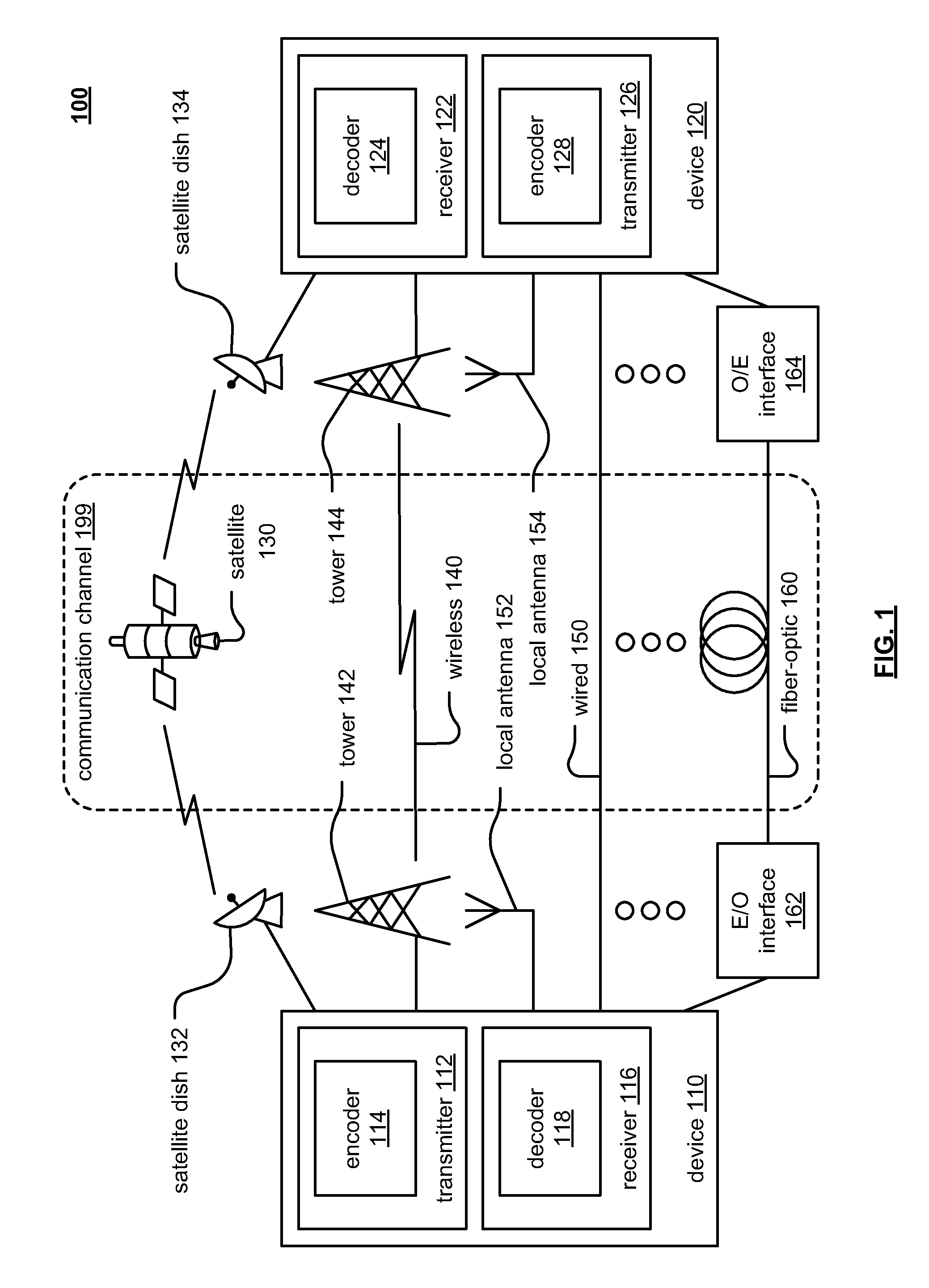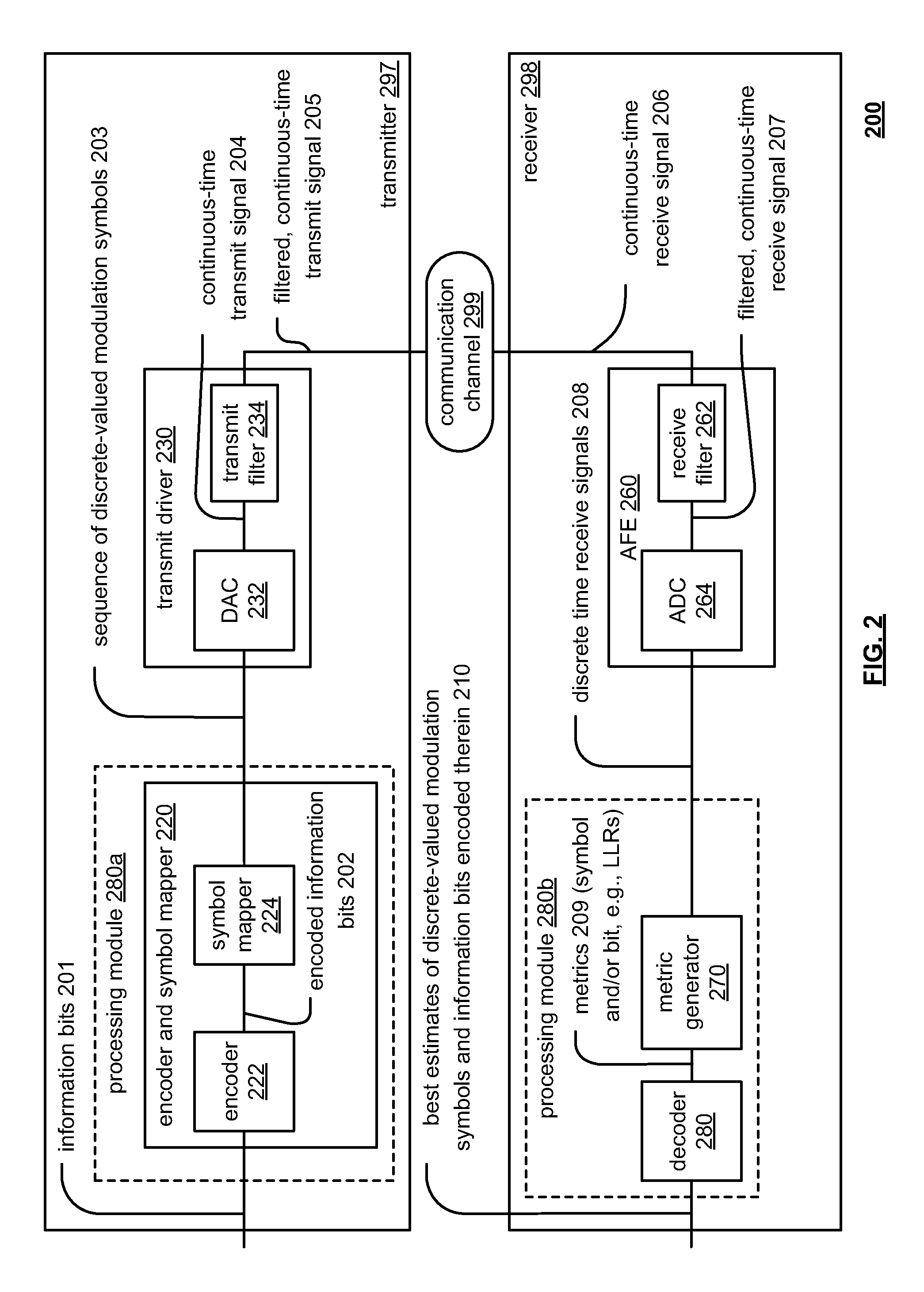Unified binarization for CABAC/CAVLC entropy coding
a technology of entropy coding and binarization, applied in the field of digital video processing, can solve the problems of low complexity of communication devices at respective ends of communication links, insufficient or acceptable art, and high overhead associated with overhead
- Summary
- Abstract
- Description
- Claims
- Application Information
AI Technical Summary
Benefits of technology
Problems solved by technology
Method used
Image
Examples
embodiment 400
[0058]Referring to embodiment 400 of FIG. 4, as may be seen with respect to this diagram, an input video signal is received by a video encoder. In certain embodiments, the input video signal is composed of coding units (CUs) or macro-blocks (MBs). The size of such coding units or macro-blocks may be varied and can include a number of pixels typically arranged in a square shape. In one embodiment, such coding units or macro-blocks have a size of 16×16 pixels. However, it is generally noted that a macro-block may have any desired size such as N×N pixels, where N is an integer. Of course, some implementations may include non-square shaped coding units or macro-blocks, although square shaped coding units or macro-blocks are employed in a preferred embodiment.
[0059]The input video signal may generally be referred to as corresponding to raw frame (or picture) image data. For example, raw frame (or picture) image data may undergo processing to generate luma and chroma samples. In some embo...
embodiment 500
[0071]Referring to embodiment 500 of FIG. 5, as may be seen with respect to this diagram, an input video signal is received by a video encoder. In certain embodiments, the input video signal is composed of coding units or macro-blocks (and / or may be partitioned into coding units (CUs)). The size of such coding units or macro-blocks may be varied and can include a number of pixels typically arranged in a square shape. In one embodiment, such coding units or macro-blocks have a size of 16×16 pixels. However, it is generally noted that a macro-block may have any desired size such as N×N pixels, where N is an integer. Of course, some implementations may include non-square shaped coding units or macro-blocks, although square shaped coding units or macro-blocks are employed in a preferred embodiment.
[0072]The input video signal may generally be referred to as corresponding to raw frame (or picture) image data. For example, raw frame (or picture) image data may undergo processing to genera...
embodiment 600
[0089]Referring to embodiment 600 of FIG. 6, with respect to this diagram depicting an alternative embodiment of a video encoder, such a video encoder carries out prediction, transform, and encoding processes to produce a compressed output bit stream. Such a video encoder may operate in accordance with and be compliant with one or more video encoding protocols, standards, and / or recommended practices such as ISO / IEC 14496-10—MPEG-4 Part 10, AVC (Advanced Video Coding), alternatively referred to as H.264 / MPEG-4 Part 10 or AVC (Advanced Video Coding), ITU H.264 / MPEG4-AVC.
[0090]It is noted that a corresponding video decoder, such as located within a device at another end of a communication channel, is operative to perform the complementary processes of decoding, inverse transform, and reconstruction to produce a respective decoded video sequence that is (ideally) representative of the input video signal.
[0091]As may be seen with respect to this diagram, alternative arrangements and arc...
PUM
 Login to View More
Login to View More Abstract
Description
Claims
Application Information
 Login to View More
Login to View More - R&D
- Intellectual Property
- Life Sciences
- Materials
- Tech Scout
- Unparalleled Data Quality
- Higher Quality Content
- 60% Fewer Hallucinations
Browse by: Latest US Patents, China's latest patents, Technical Efficacy Thesaurus, Application Domain, Technology Topic, Popular Technical Reports.
© 2025 PatSnap. All rights reserved.Legal|Privacy policy|Modern Slavery Act Transparency Statement|Sitemap|About US| Contact US: help@patsnap.com



